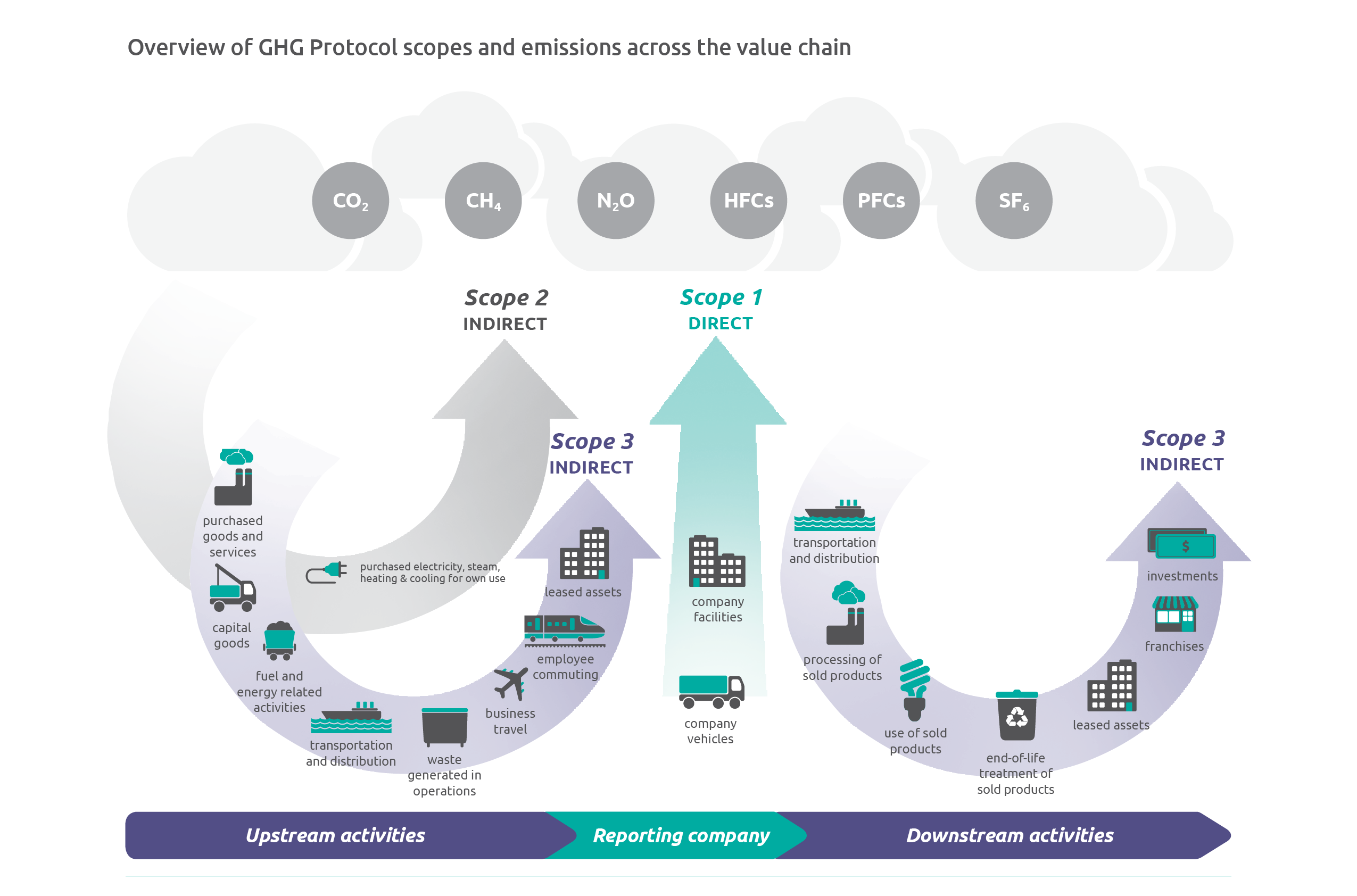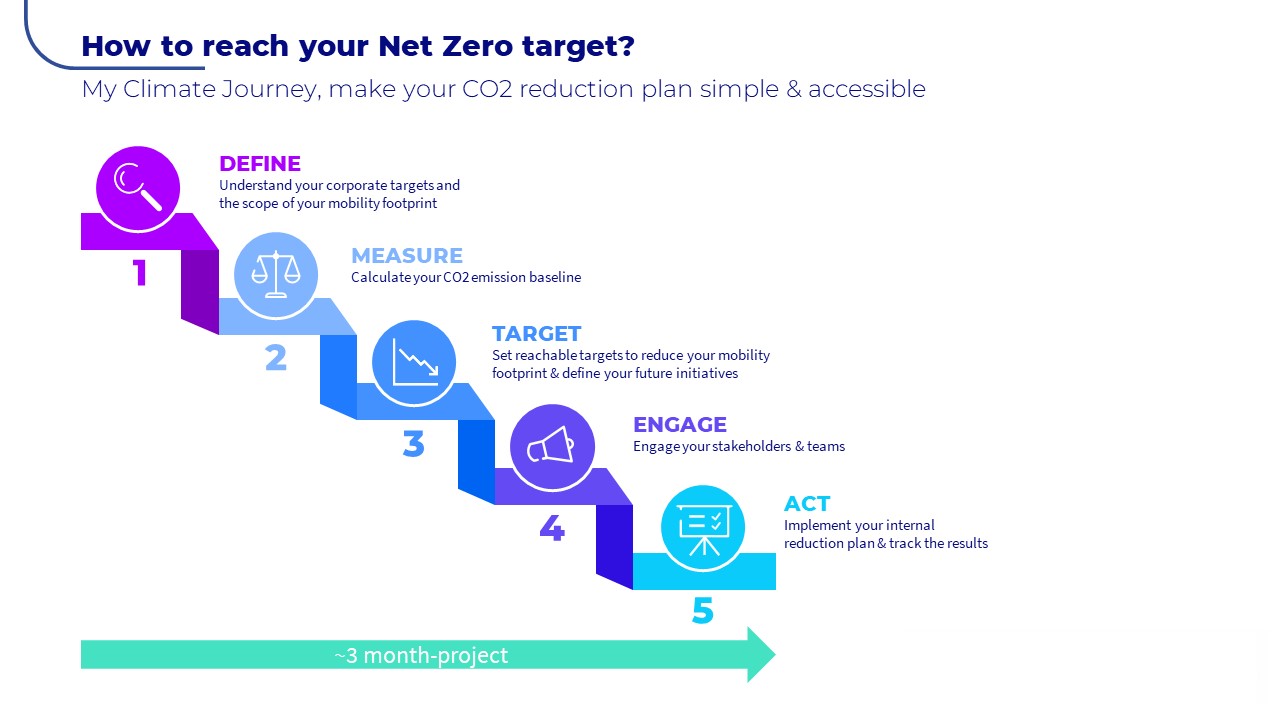CO2 reporting obligations in Europe: what you need to know
The release of successive Intergovernmental Panel on Climate Change (IPCC) reports has emphasized the need for states and organizations to act much sooner than the previously idealized date of 2050. As mobility accounts for a significant 25% of total CO2 emissions in the EU(1), this makes it a major contributor to global emissions. Clearly, mobility habits and standards need to evolve. With climate action becoming increasingly urgent, companies are therefore striving to maximize sustainability in every way possible, and that naturally includes mobility. Taking action goes hand in hand with accountability, which can only be achieved through increasing transparency in reporting and the end of vague claims or smokescreens on climate neutrality. This is why regulatory reporting standards on sustainability are expected to raise considerably. Mobility and fleet managers are faced with the double challenge of figuring out how to concretely reduce employee mobility and find ways to accurately report their fleet emissions, measure their employees’ commuting footprint with a set time frame. In this article, we’ll explore the changes in CO2 reporting requirements to come and how your company can comply.
Increase in reporting obligations and how the Corporate Sustainability Reporting Directive raises the bar for organizations
Europe is at the forefront of sustainability reporting standards. The current directive regulating sustainability reporting – the Non-Financial Reporting Directive – (NFRD), transposed in many ways across member states, was already paving the way for CO2 emissions reporting. Enforcement of the Corporate Sustainability Reporting Directive (CSRD) in 2024 will bring disclosures – and notably CO2 emissions - to the next level. The Delegated Act on CSRD has just been released by the European Commission on July 31st.
Two things you need to know about CSRD
Firstly, starting in 2024, the CSRD will impact an expanded range of corporations, addressing approximately 50,000 corporates across Europe, which is four times more than before. Additionally, for the first time, non-EU based companies will also be included in the scope of this directive. This will be a phased approach, with companies currently reporting NFRD as the first in line, and other categories of corporates gradually “joining the club” until 2028.
Secondly, the scope and depth of the key performance indicators (KPIs) to be reported will increase significantly. Organizations will now be required to report over 1,000 mandatory Environment, Social, and Governance (ESG) data points, based on 12 Reporting Standards (called ESRS). Climate strategy and metrics are not strictly mandatory, but if a company concludes that climate change is not a material (i.e. relevant) topic and therefore does not report in accordance with that standard, it has to provide a detailed explanation of the conclusions of a so-called materiality assessment. I think we can all agree that the number of businesses that can legitimately claim that they have no impact on climate change are scarce. Therefore, greenhouse gas reporting on all scopes (Scope 1, Scope 2, Scope 3) will soon become mandatory. Scope 1 emissions cover direct emissions from owned or controlled sources while scope 2 emissions include indirect emissions from the generation of purchased electricity, steam, heating, and cooling consumed by the reporting company. Scope 3 emissions encompass all other indirect emissions that occur in a company's value chain, such as the use of sold products and purchased goods. Within scope 3, priority will be given to the most meaningful categories according to the business model of the company.
So, what about fleet and mobility?
Reporting leased vehicles is not straight-forward, as it can be classified in either scope 1 or scope 3 depending on specific circumstances. With the emergence of electric vehicles (EVs), the complexity further intensifies, and these vehicles may need to be reported in a different scope altogether. This complexity arises because the classification depends on various factors, including the ownership of the vehicle, the responsibility for its emissions, and the company's operational context.
For companies using leased vehicles, accurately determining the appropriate scope for reporting emissions becomes a critical consideration in meeting the expanded reporting requirements under the CSRD. Properly categorizing emissions from EVs and leased assets is crucial to ensure compliance with the new standards and to provide transparent and accurate ESG reporting to stakeholders. As the CSRD evolves and gains traction, organizations must navigate these complexities diligently to uphold their environmental responsibilities and contribute to the ongoing efforts in achieving sustainable and transparent business practices.

Source: Corporate-Value-Chain-Accounting-Reporing-Standard_041613_2.pdf (ghgprotocol.org)
Implementing, reporting and monitoring your emissions reductions: a multifaceted task!
Implementing, reporting, and monitoring your emissions reductions to meet the CSRD requirements is a multifaceted task that requires active involvement from mobility and fleet managers. This responsibility extends to encompass all forms of corporate mobility, ranging from company cars to employee commuting, irrespective of the transportation means used, be it cars or public transportation, and the technology employed, including ICE vehicles or EVs. For EVs, ensuring accurate reporting becomes even more crucial, as it involves covering different charging use cases (office, home, and public charging) and reflecting the carbon intensity of the actual energy used.
Navigating this complex landscape of emissions reporting, ALD Automotive | LeasePlan offers a robust methodology and tool known as ‘My Climate Journey’, providing a comprehensive solution for calculating, reducing, and reporting CO2 emissions. Beyond establishing a baseline and defining the necessary mobility transformation, ‘My Climate Journey’ also offers essential support for change management, implementation, and ongoing monitoring and reporting. By leveraging this solution, organizations can streamline the entire process, confidently navigating their sustainability journey, and aligning with the CSRD guidelines.
The CSRD journey: a new timeline and thresholds
As companies embark on their CSRD journey, it's essential to understand the implementation timeline and thresholds set by the regulation. Ensuring timely and accurate reporting is not only vital for meeting regulatory obligations but also reinforces a commitment to environmental stewardship and transparent corporate practices.
In this journey towards greater sustainability, mobility and fleet managers hold a key role. We have developed a new solution ‘My Climate Journey’, which can provide valuable support to organizations seeking to navigate the complexities of emissions reporting, reduction, and compliance with confidence.

Addressing Scopes 1/2/3 emissions, we use the Greenhouse Gas Protocol for auditable reporting. Our approach includes detailed fleet baseline calculations, considering NEDC vs. WLTP standards2. For commuting, we use specific emission factors per mobility means with mileage/time data. Our panel ensures accurate reporting for all commuters, including non-company car drivers, meeting CSRD requirements. This fosters sustainability commitment and transparency in compliance.
By leveraging our expertise and knowledge, ALD Automotive | LeasePlan stands ready to support mobility and fleet managers in meeting increasing reporting obligations while also facilitating the adoption of sustainable mobility solutions. To learn more about concrete actions on how a fleet manager can reduce a fleet’s carbon emissions, watch the replay of our webinar.
(1) www.eea.europa.eu/en/topics/in-depth/transport-and-mobility
(2) NEDC vs. WLTP standards: NEDC (New European Driving Cycle) and WLTP (Worldwide Harmonized Light Vehicles Test Procedure) are standards used to measure vehicle fuel efficiency and emissions. NEDC is outdated and less accurate according to regulators and experts due to its failure to replicate real-world driving conditions, while WLTP provides more realistic and reliable data by simulating a wider range of driving conditions.